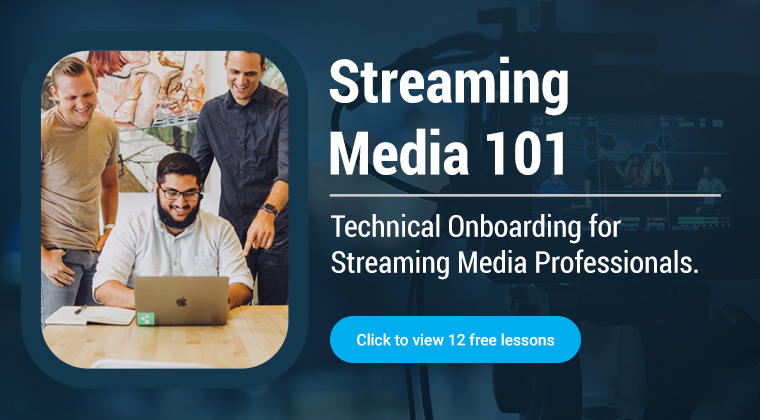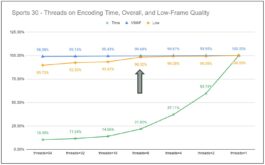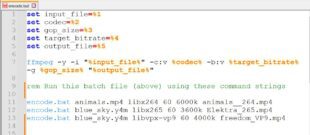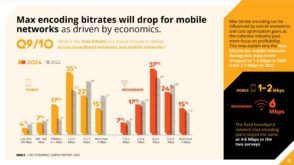I recently tested the Deep Render AI codec and issued a report, which you can read here. The bottom line was that in the tested low-latency use case, the Deep Render AI codec substantially outperformed SVT-AV1 quality-wise and was only slightly behind VVenC. While the codec lacks features like bitrate control that are necessary for most deployments, it offers outstanding integration …
Read More »Ultra-Low Latency Video Control – An Interview with Jean-Baptiste Kempf of Kyber
At Mile High Video 2025, I sat down with Jean-Baptiste Kempf (JB), founder of Kyber and lead developer of VLC, to discuss his latest innovations in ultra-low latency video control. JB is well-known in the open-source community for his work on VLC Player and FFmpeg, and now, with Kyber, he’s pushing the boundaries of real-time machine control. You can watch …
Read More »Deep Render AI Codec Running in FFmpeg and VLC
AI-based video compression has been discussed in research for years, but practical implementations are virtually nonexistent. In a recent conversation with Arsalan Zafar, CTO and co-founder of Deep Render, and Sebastjan Cizel, Head of Engineering, we explored the real-world performance of Deep Render’s AI codec real-world encoding and decoding performance, how its quality compares to HEVC, AV1, and VP9, and …
Read More »What’s the Best Setting for x265 Two-Pass Encoding?
I’m running some 1-pass vs. 2-pass comparison testing with x265. Unlike with x264 (see tests here), there’s a substantial performance penalty for running 2-pass with minimal quality benefit. I tried the no-slow-firstpass=1 setting, which only accelerated two-pass by about 14%. Here are the results from a single test file. I don’t want to process them all if there’s a magic …
Read More »How Thread Count Impacts Video Encoding Quality, Throughput, and Cost
Learn how thread count impacts video quality, encoding speed, and costs in FFmpeg workflows. Master configurations for optimal production and testing results.
Read More »Announcing Free Course on Controlling the AMD MA35D with FFmpeg
I’m pleased to announce a new free course, MA35D & FFmpeg Quick Start: Essential Skills and Expert Tips. As the title suggests, the course will get you up and running quickly and help you configure the MA35D for optimal throughput and quality for your application. The first few lessons describe how to access the MA35D’s hardware options for decoding, encoding, …
Read More »How GPAC Technology is Shaping the Future of Streaming: Key Insights from Fred Dawson
In a recent interview available on YouTube, Jan Ozer sat down with Fred Dawson, an industry journalist and principal at Dawson Communications, to discuss his whitepaper for Motion Spell titled “GPAC: Ultra Media Technology Breaks Barriers to Next Gen Streaming.” Released in conjunction with GPAC’s 21st anniversary, the whitepaper illuminates how GPAC UltraMedia technology is setting new benchmarks for cost …
Read More »Simplify Your Workflow: Command-Line Variables in FFmpeg Batch Files
Creating batch files with variables is one of the more efficient ways to run FFmpeg. However, most producers build their batch files with variables inserted directly into the batch file, which means that you have to customize each batch file for different source files or encoding parameters. This is particularly inefficient when you’re encoding multiple files to different encoding parameters; …
Read More »Navigating Rate Shaping and Zero Rating: Key Takeaways from Qwilt’s Findings
Many streaming publishers focus on the top rung of their encoding ladders and let the rest fall where they may. Recently released survey findings from Qwilt indicate that publishers serving a high percentage of mobile viewers should also focus on the middle rungs, as zero rating and rate-shaping make these the most highly viewed rungs on some mobile networks. The …
Read More »Simplifying Streaming Workflows with Norsk: An Interview with Dom Robinson
I recently spoke with Dom Robinson, co-founder and Chief Business Development Officer of id3as, to discuss id3as’ flagship product, Norsk, and its suitability for OTT and streaming publishers. Here’s a video of the conversation and a summary of the contents. Video 1: The complete interview. Existing Technologies and Pain Points Dom started by identifying the categories included in the streaming …
Read More » Streaming Learning Center Where Streaming Professionals Learn to Excel
Streaming Learning Center Where Streaming Professionals Learn to Excel












